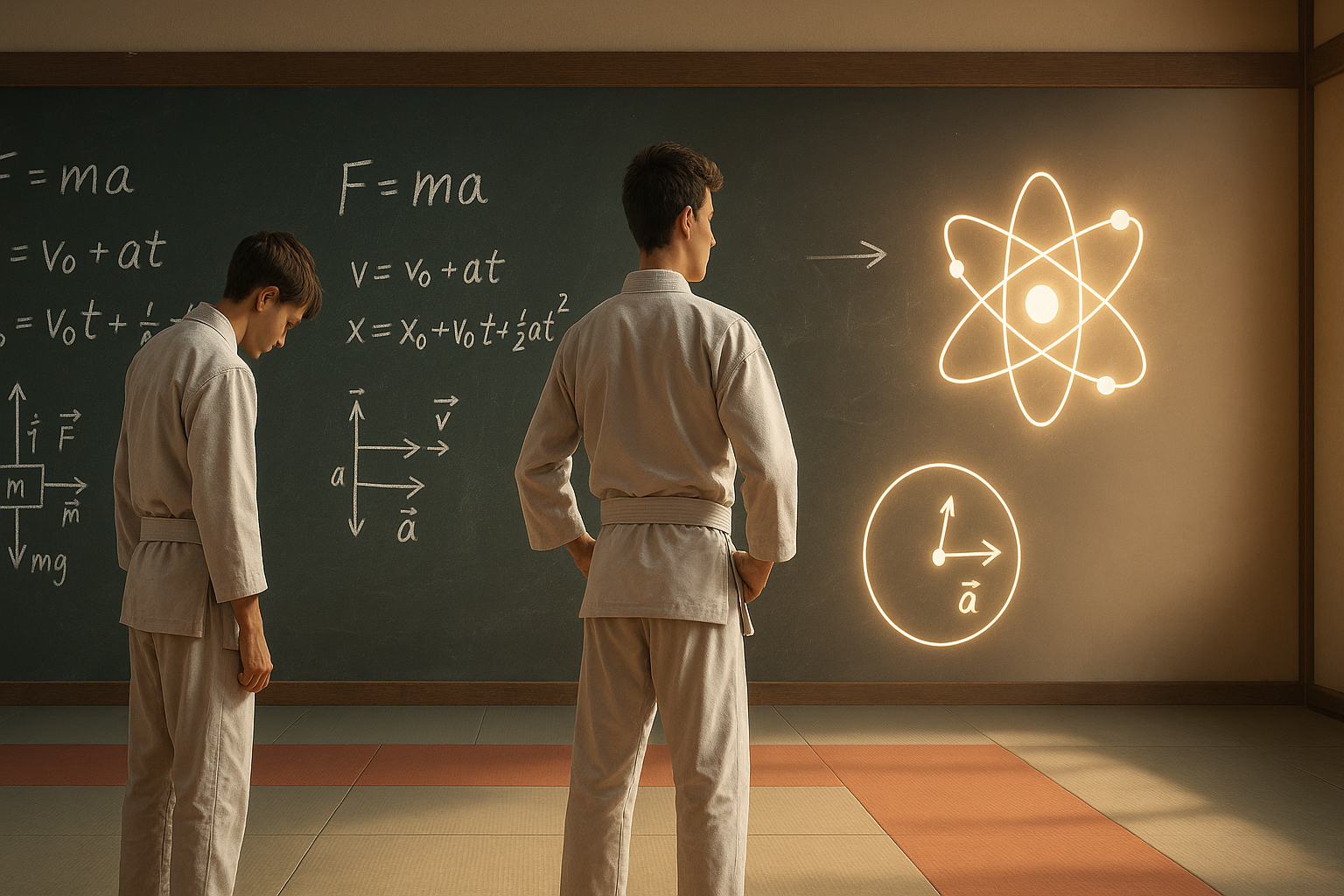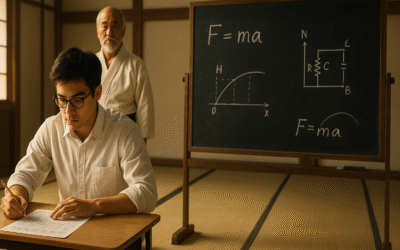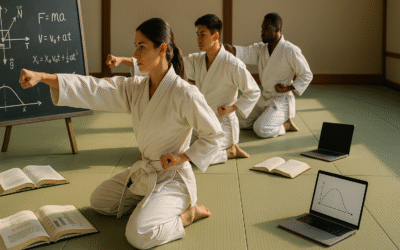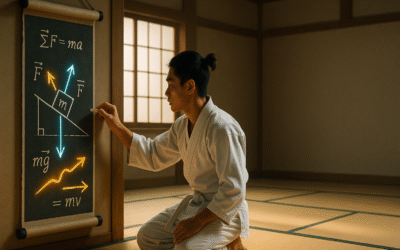Opening Move
Physics confidence isn’t about being a “genius.” It’s about building small wins until fear turns into flow. Many students freeze at the sight of a tough problem, but in the dojo, we know that fear means you’re at the edge of growth. In this post, you’ll discover a formula to build confidence in physics step by step.
Roadmap
Here’s what we’ll cover:
- Why fear blocks physics confidence.
- How small wins lead to flow.
- A simple dojo formula to boost your belief.
Fear Blocks Confidence
Fear makes physics problems look bigger than they are. A student might think, “I can’t solve this,” before even trying. That mindset shuts down progress. In martial arts, fear of sparring holds you back from learning your true strength.
Sensei Brain Hack: Flip fear into curiosity. Ask, “What can I learn from this problem?” instead of “What if I fail?”
Takeaway: Fear shrinks when you treat problems as training, not judgment.
Small Wins Build Flow
Confidence comes from stacking small victories. Solve one problem correctly, and suddenly the next feels possible. In the dojo, every new belt is proof of progress, not perfection.
👉 Try the Readiness Test to find your starting point. Small wins begin where you are.
Sensei Brain Hack: Track your wins in a notebook. Even writing “I solved 2 problems today” builds belief.
Takeaway: Wins add up. The more you collect, the more confident you become.
The Physics Confidence Formula
Here’s the dojo formula for building physics confidence:
Confidence = Practice × Feedback × Progress
- Practice: Train daily with short sessions.
- Feedback: Check answers, ask questions, or use mentors.
- Progress: Move up one step at a time—like belts in the dojo.
👉 Want a path to climb? Start at Pick Your Belt and level up at your own pace.
Sensei Brain Hack: Confidence grows fastest when progress is visible. Chart your belt progress or problem counts.
Takeaway: Confidence is built, not given. Follow the formula and flow will come.
Science of Confidence
Research in learning science shows confidence grows from self-efficacy—the belief that effort leads to results (APA resource). Every solved problem proves you can succeed again.
Sensei Brain Hack: After finishing a problem, pause and say: “I earned this.” That habit strengthens your self-belief.
Takeaway: Science agrees: confidence is trained like any other skill.
Common Mistakes (❌ / ✔️)
❌ Waiting for confidence before starting.
✔️ Starting small and letting confidence grow.
❌ Avoiding hard problems out of fear.
✔️ Using them as training opportunities.
❌ Ignoring progress.
✔️ Tracking every win, no matter how small.
Mini-Drill
Tonight, choose one physics problem you fear. Break it into steps, attempt it, and record what you learned. Do this three times this week. Watch fear turn into confidence.
Sensei’s Final Words
Confidence is not magic, it’s a formula. Train daily, stack wins, and climb your belts. Soon, fear will fade and flow will take its place.
FAQs:
- How do I build physics confidence?
Start small, practice daily, and track progress to grow belief step by step. - Why do I feel afraid of physics problems?
Fear comes from uncertainty. Confidence grows when you practice and collect small wins. - Can anyone gain confidence in physics?
Yes. Confidence is built through consistent practice and feedback, not natural talent.





0 Comments